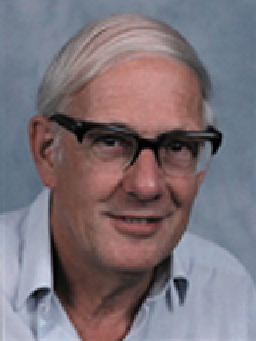Biology Reference
In-Depth Information
reason to think that these functions would require lipid asymmetry. This would have to be
tested
[8,9]
.
There are now three major and very distinct methods to measure lipid asymmetry in
membranes: chemical modification; enzymatic modification; and lipid exchange. Any
successful technique has to cause a measurable alteration of a membrane lipid. The method
must modify the lipid without destroying the membrane or making the membrane leaky to
the reagent. The chemical, enzymatic or lipid exchange agents must only alter the external
leaflet lipid without being exposed to the inner leaflet lipid and the procedure must be fast
compared to the rate of trans-membrane lipid diffusion (flip-flop).
Chemical Modification
The first report of lipid asymmetry in membranes came from Mark Bretscher's lab at
Oxford in 1972
[10]
. Bretscher (
Figure 9.8
) developed the primary amine binding reagent, for-
mylmethionylsulphone methyl phosphate (FMMP, Bretscher's Reagent,
Figure 9.9
) for his
studies. He reported that with intact erythrocytes, most PE and PS (primary amine lipids)
could not be labeled by FMMP. However, almost all PE and PS could be labeled in leaky
erythrocyte ghosts. Therefore, he concluded that most PE and PS reside on the inner leaflet
of erythrocytes. Later FMMP was replaced by the more available trinitrobenzenesulfonate
(
Figure 9.9
). Both compounds are employed identically. The intact cells are exposed to the
reagent and after a short incubation the cells are removed from the solution and washed
free of the reagent. The membrane lipids are then extracted and separated, usually by thin
layer chromatography (TLC). These methods are discussed in Chapter 13. The amounts of
labeled (outer leaflet) and non-labeled (inner leaflet) PE and PS are quantified and the
outside-to-inside ratio for both lipids determined.
Another interesting pair of primary amine-detecting reagents used in lipid asymmetry
determinations is ethylacetimidate (EAI) and isethionylacetimidate (IAI). Both compounds,
shown in
Figure 9.9
, attach to PE and PS by the same mechanism. The difference between
FIGURE 9.8
M. Bretscher (1940
e
). Courtesy of Mark S. Bretscher.


